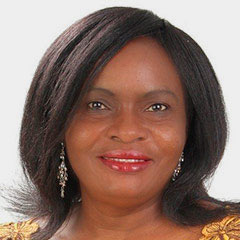The Mandela House is located in Vilakazi Street 8115, Orlando West, Soweto. Now a museum, the Mandela House Museum is where the struggle icons Winnie Madikizela Mandela and her husband Nelson Mandela lived. There, they brought up their two daughters Zenani and Zindzi. Nelson Mandela spent little time at the house as he had to go underground during the struggle between 1946 until 1990s. He was arrested in 1962.
Winnie Mandela had to bring up the children while continuing the struggle. She was banished to the Free State town of Brandfort in 1977. Winnie Mandela was born in Mbongweni village, Bizana, Transkei on 26 September, 1936. She married Nelson Mandela in 1958. The marriage to a freedom fighter was a lonely one. The police often raided the Vilakazi Street 8115. Her husband was absent with meetings and amidst the turbulence she had to bring up the girls. In October 1958 she took part in the lady’s march to protest against pass laws. This was similar to the one in 1956 in Pretoria. She was an anti-apartheid activist and politician. She divorced Nelson Mandela in 1996 and was the minister of arts and culture from 1994 to 1996. She led a quiet life and on her 80th birthday, she was honored by family friends and politicians, including Julius Malema and the future President of South Africa, Cyril Ramaphosa, and Patricia de Lille, former mayor of Cape Town. This demonstrated her relationships with all political parties. She passed on 2 April 2018. A true mother of the nation.
Nelson Rolihlahla Mandela was born in Umtata on 18 July 1918. At the famous Rivonia trial, Mandela was brought before the court for his involvement in sabotage and violence in 1962. He was imprisoned for 27 years in total. He was first sent to Robben Island but later transferred to Victor Verster Prison in 1988. He was released from prison after 27 years in 1990 and he came home for only 11 months, after which he moved to a bigger home in Houghton, Johannesburg. The former State President, de Klerk, ordered his release and removed a ban on the political movement the African National Congress. Mandela served as President of the African National Congress (ANC) from 1991 to 1997. His Presidency is known for his legacy in ending racism, trying to fight poverty and inequality. He was dreaming of a nation free of racism with all people living together with all colours; the so-called Rainbow Nation. He wanted freedom without violence but the oppressors started killing his people. He then formed the Umkhonto we Sizwe, a military arm of the ANC. Nelson Mandela received a Nobel Peace Prize in 1993 with former state President of South Africa, Frederik Willem de Klerk.
The Mandela House has four bedrooms and one of them goes down memory lane. It brings both tears and relief, knowing that the Mandelas survived petrol bombs and bullets in the house during riots. The Mandela House Museum contains several honorary degrees awarded to Nelson and Winnie Madikizela-Mandela. It also hosts artefacts, memorabilia and artworks including “Tears of Freedom” by Leonard Katete, a Ugandan living in Kenya. The museum is a monument of history, harbouring family photographs dating back as far as the 1950s.
The Nelson Mandela Museum is open for public tours and photographs are allowed.
Vilakazi Street was also home to Bishop Desmond Mpilo Tutu, who was an Anglican Bishop and theologian well known for his humorous and critical speeches that call to order the freedom fighters. He played a major role during the anti-apartheid and human rights struggle for South Africa. Bishop Desmond Tutu was honoured with a Nobel Peace Prize for his achievements in opposition to South Africa’s brutal apartheid regime. He took a non-violent yet fearless stance against the oppressors, a characteristic that made him stand out amongst the liberation leaders. He articulated the sufferings of ordinary South Africans in clear manner and at the same time spoke up about the oppressive regiment. It is not surprising that Bishop Tutu’s Peace Prize paved the way for strict sanctions against South Africa in the 1980s.
Bishop Tutu chaired the Truth and Reconciliation Commission in 1995. Due to the fact that South Africa had suffered many wounds during apartheid, the many crimes committed by white rulers and atrocities against the black majority, the commission was established to “enable South Africans to come to terms with their past on a morally accepted basis and to advance the cause of reconciliation." The lack of social cohesion mainly due to racial disharmony led the newly elected Government led by Nelson Mandela to put together the Truth and Reconciliation Commission (TRC) under the chairmanship of Bishop Desmond Tutu. Cases such as the Soweto Riots (1976), in which Hector Pieterson was killed, were discussed; the Sharpeville Protests (1960 and 1984) and a number of other prominent cases were dealt with. Forgiveness was recommended as the fundamental condition of healing.
Vilakazi is also known for the Hector Pieterson Memorial and Museum, which were established to remember the Soweto uprising on June 16, 1976. Hector Pieterson was shot during the revolt on the day when schoolchildren demonstrated against the use of Afrikaans as a language of instruction for middle and secondary school.
Vilakazi Street and the Nelson Mandela Museum attract a number of tourists. The street is vibrant with good local food, music and dance. It has created small businesses in the township and is thereby contributing to the local economy.
References
- https://www.sahistory.org.za/people/winnie-madikizela-mandela
- https://www.sahistory.org.za/article/tutu-and-his-role-truth-reconciliation-commission, retrieved 26 January, 2019
- https://www.nobelprize.org/prizes/peace/1993/mandela/biographical/ , retrieved 26 January, 2019
published April 2020

